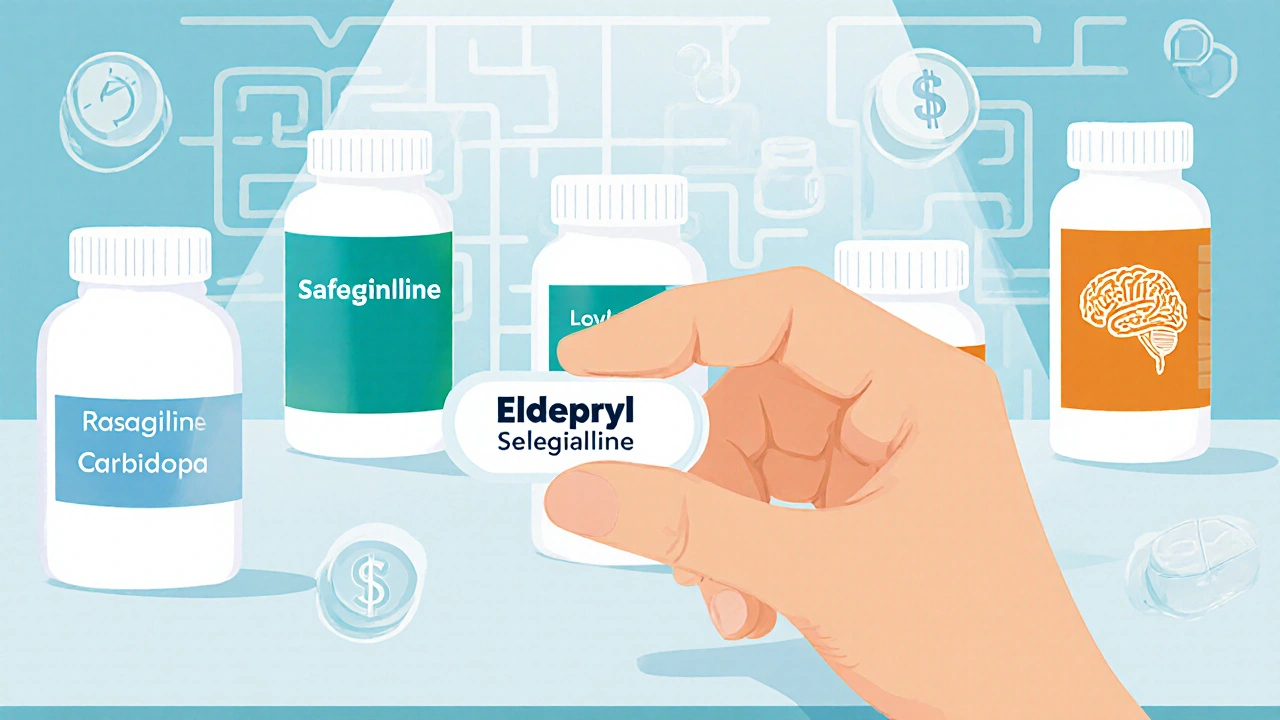Rasagiline: What It Is, How It Works, and What You Need to Know
When you hear Rasagiline, a selective monoamine oxidase-B (MAO-B) inhibitor used to manage symptoms of Parkinson’s disease. Also known as Azilect, it helps the brain hold onto more dopamine — the chemical that moves signals between nerve cells and gets depleted in Parkinson’s. Unlike older drugs that just replace dopamine, Rasagiline works by slowing down its breakdown, so what your body still makes lasts longer. This makes it useful both on its own in early stages and with levodopa later on.
It’s part of a group called MAO-B inhibitors, a class of drugs that block an enzyme that destroys dopamine in the brain. Other drugs in this group include selegiline, but Rasagiline is often preferred because it doesn’t break down into amphetamine-like byproducts, which can cause side effects. It’s also taken once a day, which helps with sticking to the schedule. For someone with early Parkinson’s, this can mean fewer tremors, less stiffness, and better movement control without the wild swings in symptoms that come with high-dose levodopa.
People using Rasagiline should avoid certain foods and medicines. While it’s safer than older MAO inhibitors, mixing it with some antidepressants, decongestants, or even large amounts of aged cheese can still raise blood pressure dangerously. That’s why doctors check your full med list before prescribing it. It’s also not for everyone — if you have liver problems, your dose might need to be lowered or avoided entirely. And while it doesn’t cure Parkinson’s, studies show it can delay the need for stronger meds in early cases, giving patients more good days.
What makes Rasagiline stand out is how it fits into the bigger picture of treating neurodegenerative disorders, conditions where nerve cells in the brain slowly die off. Parkinson’s isn’t just about shaking — it affects sleep, mood, and even digestion. Rasagiline doesn’t fix all of that, but by keeping dopamine levels steadier, it helps smooth out the rough edges. That’s why it’s often paired with other treatments, like physical therapy or medications for depression, which are common in Parkinson’s patients.
You’ll find posts here that talk about how Rasagiline compares to other Parkinson’s drugs, what side effects to watch for, and how it stacks up against newer options like dopamine agonists. Some articles dig into why it’s used differently in younger vs. older patients. Others explain how it interacts with common over-the-counter meds people don’t realize can be risky. There’s also info on what happens if you stop suddenly — and why that’s dangerous. This isn’t just a list of drug facts. It’s a practical guide for people managing Parkinson’s, caregivers, or anyone trying to understand what this pill really does.
Eldepryl (Selegiline) vs Alternatives: Detailed Comparison
Explore a thorough comparison of Eldepryl (Selegiline) with Rasagiline, Safinamide, Levodopa, and Pramipexole, covering mechanisms, dosing, side effects, costs, and practical decision tips.
